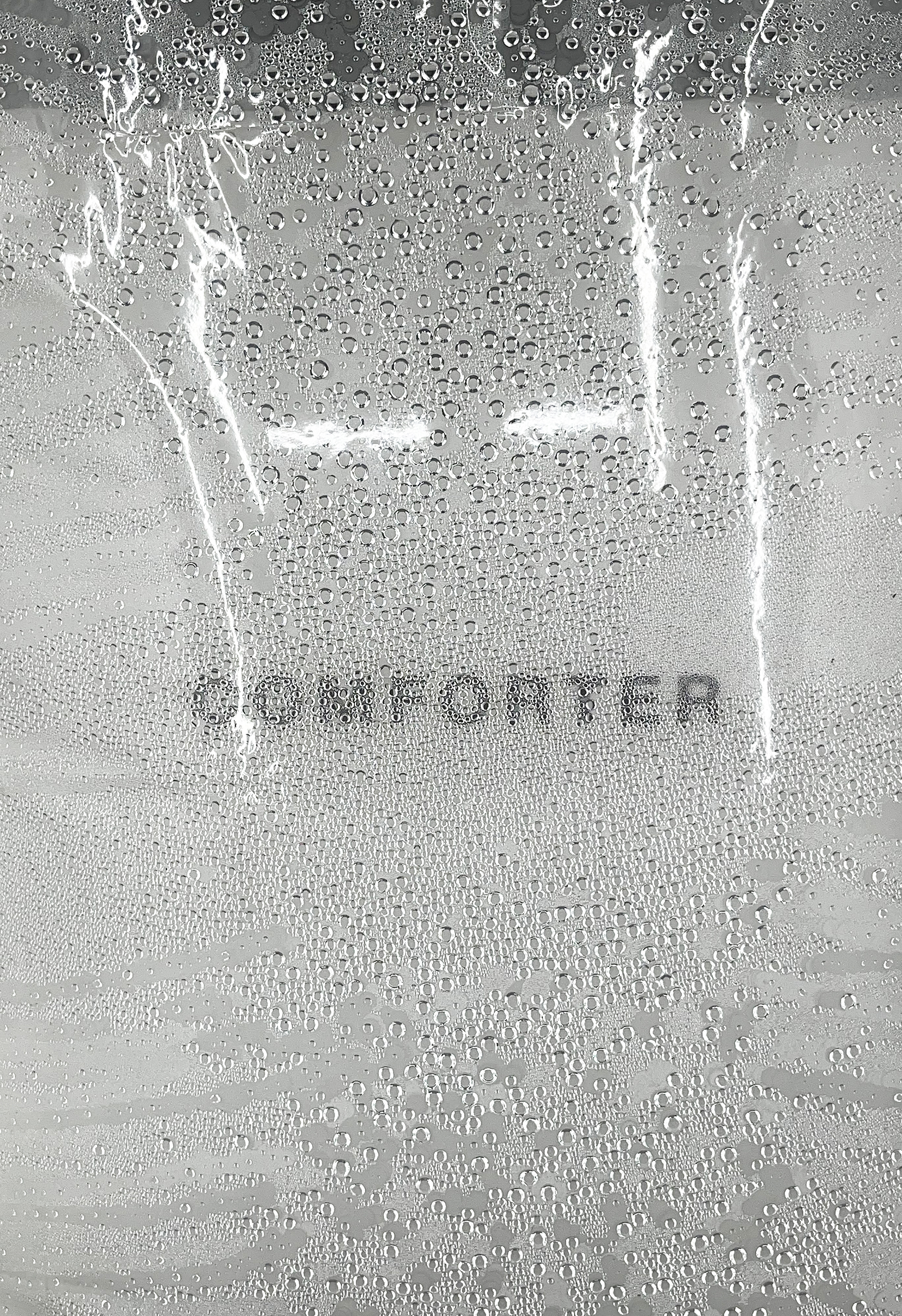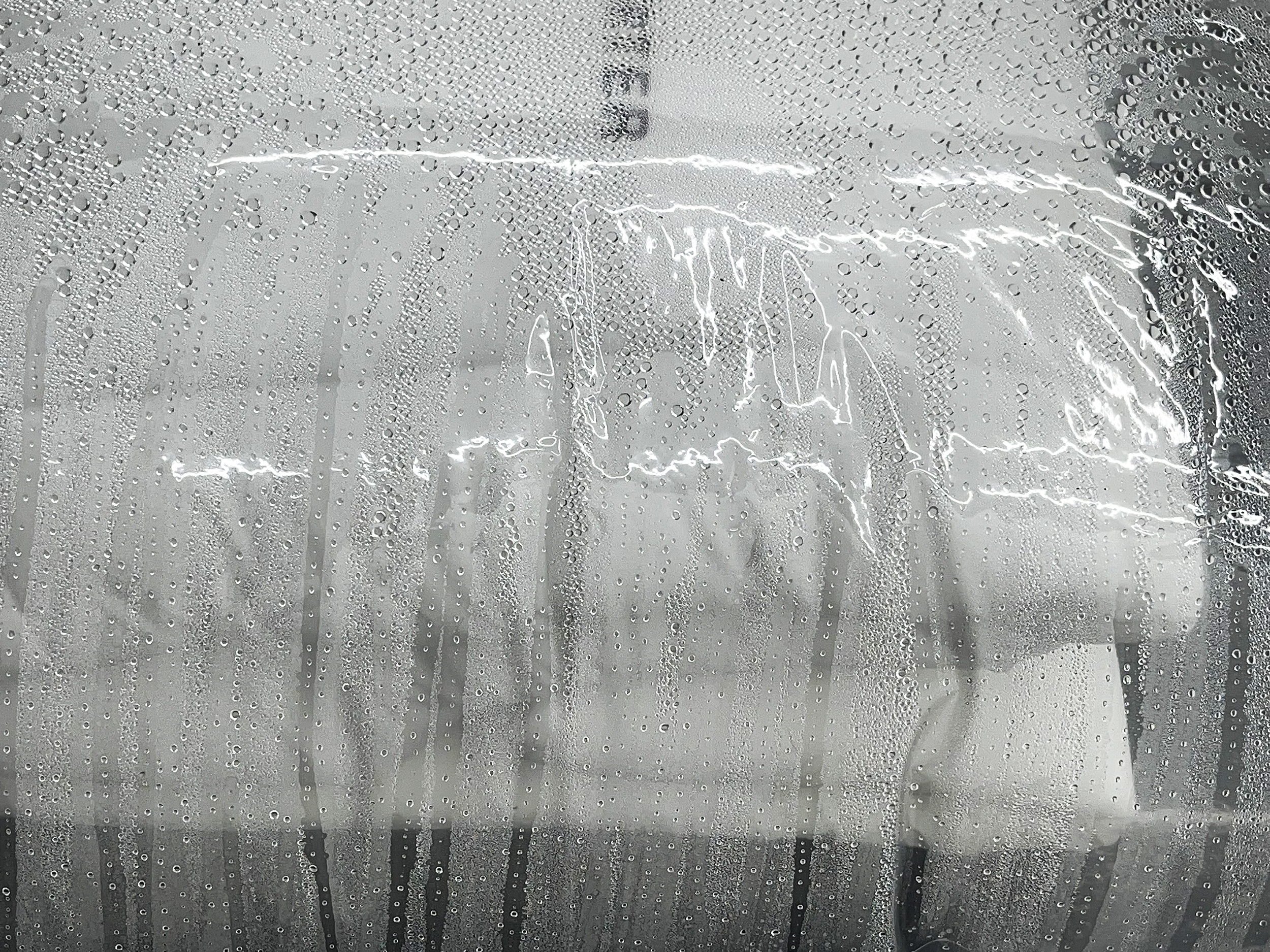Gesture in Residence: Hui Lee
Please join us for a public opening reception Thursday, November 3rd, 7-9pm
304 w Crest Ave, Tampa, FL 33603
make an appointment via Instagram message @_jasonlazarus_
Hui Lee lives and works in Catskill, NY
Scroll down for an interview with Hui Lee
learn more about the artist’s work at https://hui-lee.com/
Hui Lee in Conversation with Jason Lazarus & Libbi Ponce

Libbi: Hui, thanks for working with us on our Gesture in Residence series. When Jason asked me about a singular work by an artist, comforter was the first that came to mind.
I first saw this piece at a residency we attended. What were your thoughts right after making this piece and have they changed since?
Hui: Thanks so much for thinking of me! I’m looking forward to talking with you both for this series.
comforter was a departure in that it led me to a textile-based practice. My work addresses the liminal shift between our individual and collective subconscious. Prior to Norfolk, I had focused on woodworking and building furniture that would serve as a representation of the body to explore this concept. However, without access to a woodshop during our residency, I was encouraged to explore using different utilitarian objects that still kept a reference to the body.
The structure of home is perhaps the most intimate place where we delineate our private-vs-public self, and for me, it becomes a container for demonstrating the inner-exterior dichotomy. Domestic items play a large significance since these objects oftentimes become imbued with our personal experiences, memories, and relationships.

In comforter, I encased a full-sized comforter with water in an inflated vacuum-seal bag. Bed coverings are objects of rest and respite; when saturated or stained, they become useless. The water over time tries to evaporate yet the plastic vessel prevents it from escaping. I wanted the condensation and self-producing humidity within the bag to represent a sense of recovery, but because it is sealed, the comforter is in continual relapse. This object is simple and recognizable, and I wanted to shape a poetic sentimentality that contradicts its intended purpose. For instance, a vacuum-seal bag is designed to protect something. Here, its function is inverted.
What I felt was missing from this piece was the use of craft techniques. Woodworking filled that gap for a while until I wasn’t able to do it at Norfolk. I made my first frame loom in conjunction with comforter, and now reflecting on this piece a few years later, I think it was integral that I was having those two conversations—one of dis/comfort and weaving, together.

Libbi: How do those themes, weaving and dis/comfort, work together?
Hui: I care deeply for craft and weaving specifically because of the intimacy that is built from handmade objects. It is a process that is both soothing and taxing. Through the soft touch of the threads and my body’s full engagement with the loom, dis/comfort is constantly at play. Intimacy is created from the hours of drafting, calculating, and meticulously placing the yarn in place for weaving, to the meditative state while producing the full textile. Each moment for me is a considered documentation of time and care.
Libbi: What was so striking to me first about the piece was the word ‘comforter’ printed on the object. I’m not sure if it was because I’d never thought about visualizing this word, or the subsequent idea of objects imparting empathy, but before seeing this work, I’d never thought about the word comforter. What led you to (screen?)printing the object’s name on itself?
Hui: I have always had writing anxiety. I’m not sure where it stems from, but I know from an early age I’ve never felt comfortable communicating in this way. In my practice, an arbitrary rule I set for myself is to only use text when it feels like a genuine mode of communication. The use of “COMFORTER” in this piece feels notable to me because this word serves two functions—both as an indicator for the object itself and as the metaphorical actor of comfort. I’m interested in conveying our items as vessels for psychological space, so I wanted comforter to dually denote and reference the body/relationships of the viewer. The inclusion of this particular word made the object become explicit in what it is, provided a precondition for a user, and ultimately gave me a clearer understanding of how impactful text can be.
Jason: Hui, it occurred to me after thinking about comforter for some time it would be interesting to bring up Hans Haacke’s Condensation Cubes (1963-1965). When I saw your work this reference didn’t immediately come to mind but it finally dawned on me and I wondered if you had any thoughts?

Hui: That’s interesting! I’m intrigued by his pieces that perform independently of the viewer. In the case of Condensation Cube, I like that the importance is placed on the actual physical exchange between the environment—only including the viewer peripherally—and what is enclosed rather than the object of the acrylic cube itself. The appearance is constantly changing as it reacts to temperature and light.
Jason: Hui, has there been an artwork that has singularly affected your work? If so what is it and how has it informed your practice?


 Hui: A professor introduced me to the work of Sol Lewitt and recommended I visit Dia:Beacon in upstate New York. I was moved when I looked into the history of Dia Art Foundation whose very specific collection houses minimal and post-minimal art. Lewitt’s use of instructed lines—like sheet music—taught me art could be precise and instrumental while containing all its information in a systematic structure. At the time, I was using the grid a lot in both my work and personal life because I sought a sense of organization/order. Ultimately, I was fortunate to have worked at Dia:Beacon for a few years and became intimately familiar with the Sol Lewitt galleries. Lewitt was the preamble to other artists I continue to draw inspiration from like Louise Bourgeois and Agnes Martin.
Hui: A professor introduced me to the work of Sol Lewitt and recommended I visit Dia:Beacon in upstate New York. I was moved when I looked into the history of Dia Art Foundation whose very specific collection houses minimal and post-minimal art. Lewitt’s use of instructed lines—like sheet music—taught me art could be precise and instrumental while containing all its information in a systematic structure. At the time, I was using the grid a lot in both my work and personal life because I sought a sense of organization/order. Ultimately, I was fortunate to have worked at Dia:Beacon for a few years and became intimately familiar with the Sol Lewitt galleries. Lewitt was the preamble to other artists I continue to draw inspiration from like Louise Bourgeois and Agnes Martin.

 Libbi: What is your process for creating an artwork? Going into detail on conception of an idea, sketches, material choices, etc.
Libbi: What is your process for creating an artwork? Going into detail on conception of an idea, sketches, material choices, etc.


Hui: My process mostly depends on the medium. Some works start structurally, like my textile and furniture based pieces, which involve a lot of pre-planning and illustrations. It helps me to slow down, visualize each step of the process, and most importantly, provides the time to process which familiar objects many of us have in our homes that aid us in decompressing. Other works, specifically like comforter and WHAT IS AN EVENT, are already charged with meaning. From there, I’ll apply the same conceptual themes of using items as containers for moments of reflection.

Not part of my art making but here’s my plant chore list for fun:
Jason: Can you talk about–given your writing anxiety–your use of titles which seem particularly writerly?!
 Hui: I believe you can say a lot in a title with few words. My method of journaling is by writing fragments of poetry; it can stem from instances within my relationships, from moments of feeling loved, to stages of grief, or even how particular meaningful lyrics or works of art affect me. Like memories, I tend to recall these fractured periods even if they feel untethered or incomplete.
Hui: I believe you can say a lot in a title with few words. My method of journaling is by writing fragments of poetry; it can stem from instances within my relationships, from moments of feeling loved, to stages of grief, or even how particular meaningful lyrics or works of art affect me. Like memories, I tend to recall these fractured periods even if they feel untethered or incomplete.
